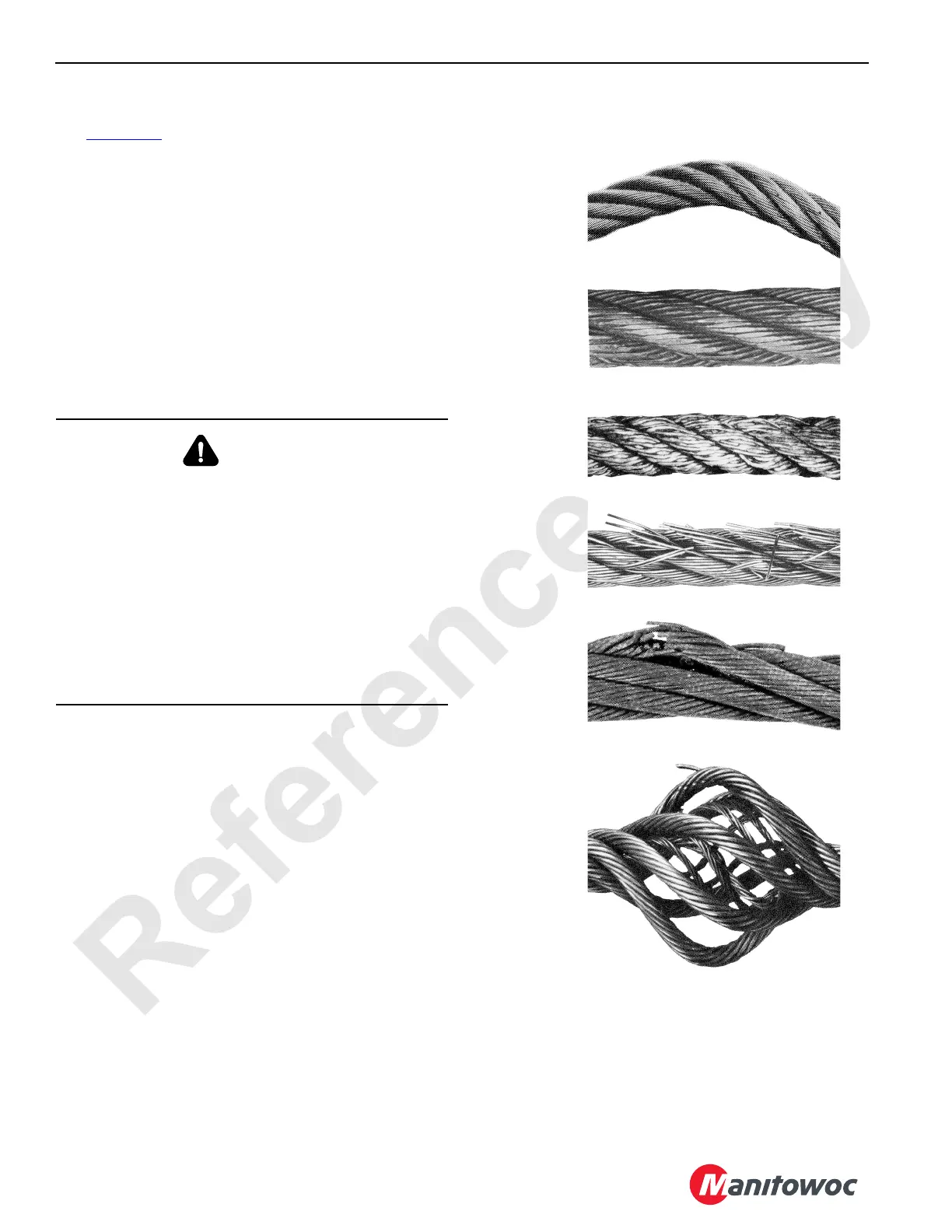HOISTS 2250 SERVICE/MAINTENANCE MANUAL
5-30
Published 07-19-16, Control # 249-01
Wear and Other Damage
See Figure 5-28 for examples of wire rope damage.
It is normal for the outer wires of the rope to wear first
because of friction.
Wire rope must be taken out of service if any of the following
apply:
• The rope core protrudes from between the outer
strands.
• Severed corrosion—indicated by pitting—exists.
• Obvious damage exists from any heat source including,
but not limited to, welding, power line strike, or lightning.
• Kinking, crushing, bird caging, or any other damage
resulting in distortion of wire rope structure exists.
DISTRIBUTING WIRE ROPE WEAR
Wire rope wear at the “critical wear points” can be reduced
and the life of the wire rope extended by moving the rope at
regular intervals so that different sections of rope are
subjected to the wear points. This practice can also help
correct spooling problems and rope vibration.
To move the wire rope, cut off a piece of wire rope at the
drum and refasten it. The piece cut off should be long
enough to move the wire rope at least one full drum wrap.
If the wire rope is too short to allow cutting off a piece of it,
reverse the rope end for end and refasten it.
WARNING
Falling Load Hazard!
Replacement wire rope can break if it does not meet
Manitowoc Cranes’ specifications given in the following
publications supplied with the crane:
• Wire Rope Specifications Chart located in the
Capacity Chart Manual (for load lines)
• Boom or Jib Assembly Drawings located in the crane
Operator Manual (for boom or luffing hoist)
• Mast Assembly Drawing located in the Parts Manual
Make sure that replacement wire rope meets all
specifications given by Manitowoc Cranes.
Dog-Leg
or
Kink
Drum
Abrasion
Drum
Crushing
Sheaves
Too Small
Corrosion
Bird Cage
